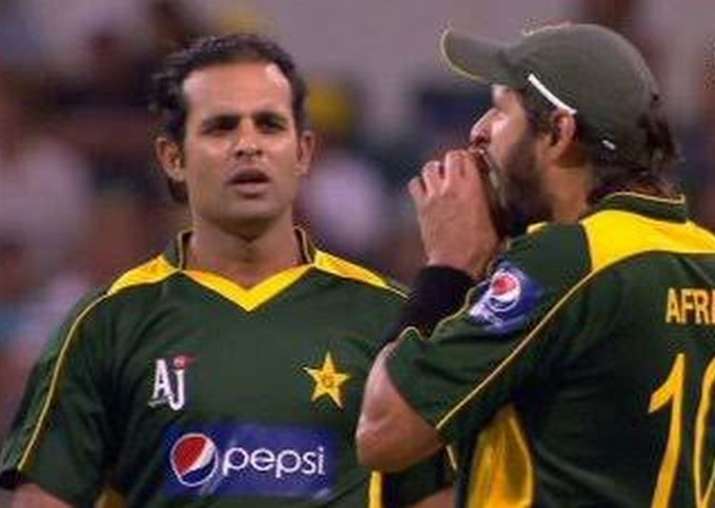A Brief Look at the Ball-Tampering Incidents Since 2000
Updated - 21 Jun 2018, 08:51 PM

In the last few months, the cricketing fraternity has seen two ball tampering scandals. In March, the ‘sandpaper-gate’ had shocked the entire cricketing fraternity after it surfaced at Cape Town.
Besieged ball tamperer Cameron Bancroft was sensationally caught applying sandpaper on the ball to change its condition, and the repercussions soon followed. The scandal brought wholesome changes in Australian cricket.
World cricket board ICC banned skipper Steven Smith for one match before Cricket Australia (CA) dealt the matter separately.
It banned Smith and his deputy David Warner for a year and handed Bancroft a nine-month ban. Not only that, Darren Lehmann also stepped down as a head coach in the wake of ball-tampering.
Recently, the ICC charged Sri Lanka skipper Dinesh Chandimal after video evidence indicated that he applied saliva to the ball shortly after allegedly putting a sweet into his mouth during the second Test against Windies.
Well, the ball tampering is nothing new in the game. Despite ICC’s continuous attempt to curb it, the players have managed to discover ways to alter the condition of the ball.
So, we take a look at every ball-tampering offence since 2000:
Sri Lanka vs Pakistan, Colombo, July 2000:

Pakistan pacer Waqar Younis became the first player in the history of the game to be suspended for ball-tampering.
The former Pakistan skipper Waqar had tried to change the condition of the ball and was docked 50 percent of his match fee. He also received a one-game ban. His teammate Azhar Mahmood was also charged with a similar offence and fined 30 percent of his match fee.
South Africa vs India, Port Elizabeth, November 2001:

One of the biggest ball-tampering scandals of the early 2000s happened when India and South Africa were playing the second Test.
India star Sachin Tendulkar was allegedly caught scuffing the seam of the ball. Match referee Mike Denness banned him for the third Test.
However, the suspension caused quite a stir in India who were already miffed at the number of players punished by Denness during the match.
The BCCI threatened to call off the tour, ultimately leading to the ICC declaring the third Test match of the series as unofficial.
Later, the Board reversed the ban on Tendulkar and dropped all the charges.
Zimbabwe vs Pakistan, Harare, November 2002:

Pakistan fast bowler Shoaib Akhtar was found guilty of tampering with the ball, during the first Test against Zimbabwe in Harare.
Match referee Clive Lloyd levelled the charge, saying Akhtar had altered the condition of the ball illegally. However, the speedster only received an official reprimand.
Pakistan vs New Zealand, Dambulla, May 2003:
Barely six months after the Zimbabwe Test, Akhtar once again found himself in the ball-tampering scandal. This time it happened against New Zealand. He pleaded not guilty, but was found guilty by the match referee. He received a ban for two One-day Internationals and was fined 75 percent of his match fee.
India vs Zimbabwe, Brisbane, January 2004:

Third umpire Peter Parker levelled ball-tampering charges against India batsman Rahul Dravid in an ODI of a tri-nation series between Zimbabwe, Australia, and India.
Dravid was seen to have rubbed a cough lozenge on the shiny side of the ball. Match referee Clive Lloyd charged him, and Dravid was found guilty. Furthermore, he was fined 50 percent of his match fee.
England vs Pakistan, The Oval, August 2006

This is perhaps the biggest ball-tampering scandal till date which ultimately led to the match being forfeited.
In a day game, umpires Darrell Hair and Billy Doctrove alleged that Pakistan had altered the condition of the ball. They had gone on to award five penalty runs to England in addition to changing the ball.
Play continued as normal until tea. After that, the Pakistan team didn’t come out onto the field of play on time. They were registering a protest. In the meantime, the umpires awarded the game to the hosts as per the law has suggested.
The then Pakistan skipper Inzamam ul Haq was eventually cleared of charges of ball-tampering. However, he was banned for four ODIs.
In 2008, the result of that particular Test was changed to a draw. However, in 2009, ICC once again reversed the decision and awarded the game to England again.
Australia vs Pakistan, Perth, January 2010:

Pakistan all-rounder Shahid Afridi was caught on TV while biting the ball with his teeth, in order to change the seam of the ball.
However, the ball was replaced by on-field umpires. He was banned for two Twenty20 Internationals
South Africa vs Pakistan, Dubai, October 2013:

This time the culprit was not a Pakistani player. On the third day of the second Test, South Africa batsman Faf du Plessis was seen scuffing one side of the ball while making a use of the zip of his trousers.
It was spotted by the onfield umpires, who awarded Pakistan five penalty runs and changed the ball. Later, du Plessis was fined half his match fee for the Test.
South Africa vs Sri Lanka, Galle, July 2014:

Few months after du Plessis controversy, another South African cricketer Vernon Philander found himself in hot waters as he was charged with the ball tampering.
Philander was deemed to have scratched the ball with his fingers, thus breaching clause 42.1 of the laws. Philander had to pay 75% of his match fee as fine.
Australia vs South Africa, Hobart, November 2016:

Du Plessis was once again hitting the headlines for all the wrong reasons.
Television footage caught him applying saliva onto the ball that had residue of a mint on it.
The on-field umpires had not charged him, but following the release of the footage, he was found guilty and fined 100% of his match fee.
India vs Sri Lanka, Nagpur, November 2017:

During the Nagpur Test, Sri Lanka pacer Dasun Shanaka was caught changing the condition of a cherry. He was seen by on-field umpires Joel Wilson and Richard Kettleborough while trying to alter the seam of the ball several times.
The pacer admitted to the offence and received three demerit points in addition to paying 75% of his match fee as fine. Of late, the ball tampering has witnessed a sudden surge.
Tagged:
Rahul Dravid Sachin Tendulkar Shoaib Akhtar Vernon Philander







